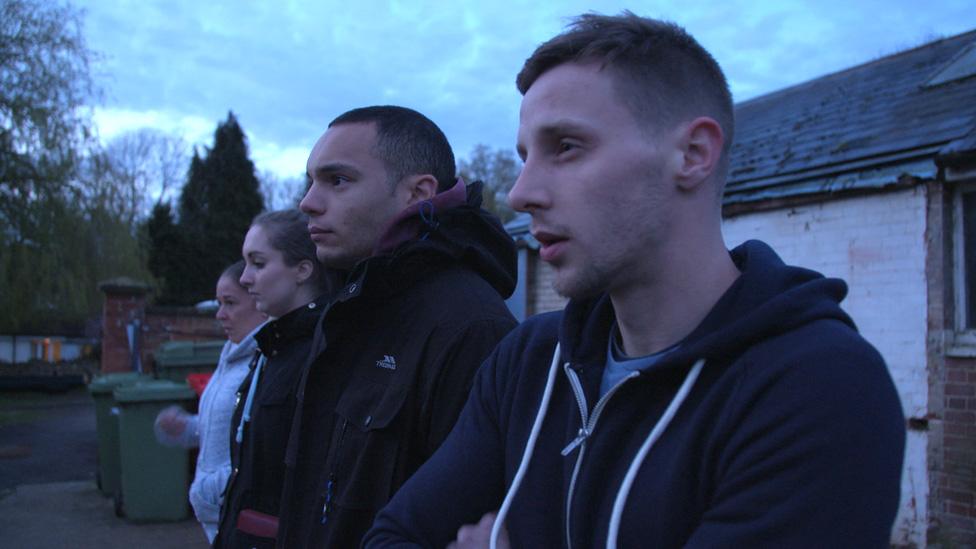Spotting the signs of modern slavery
- Published

Slavery is not a thing of the past. The 2016 Global Slavery Index report has estimated that there are 11,700 people in the UK living as slaves.
This means that they are being held against their will and forced to work with little or no pay.
It comes in many forms including sexual exploitation, being forced to commit crimes and working to pay off unrealistic debts.
A conviction in the UK can result in up to life imprisonment and a fine.
BBC Three has launched a series looking at modern slavery.
In it, three volunteers are signed up to live the life of a modern day slave for 24 hours.
Delivered to their gang masters, they are stripped of their identities and forced to work.
Watch: Making a Slave - part one, external
Warning: YouTube video may contain adverts
These are the key signs, according to Home Office-backed website modernslavery.co.uk, external.
Those being kept as slaves might have their movements restricted
It is not normal to never be able to leave the house on your own, or always having to follow strict instructions on where you are allowed to go and who you can talk to, but that is the reality for some people. This means those living like this may have a lack of knowledge of the area where they live and work.
They may also be collected or dropped off to work at very unusual times to avoid being seen by members of the public.
Below you can see part two of the series.
Their gruelling experience is based on testimony from survivors rescued in Britain.
Watch: Making a Slave - part two, external
Warning: YouTube video may contain adverts
Often looking injured and malnourished
Some slaves are physically abused as a means of control, so regular bruising and injuries could suggest there are problems.
Victims are generally poorly cared for and living in overcrowded, dirty accommodation and given very little food which can lead to them appearing malnourished and ill.
A lack of belongings
We're not talking about not owning the latest smartphone, but having things like their passports and ID taken from them to stop them having freedom to leave and work elsewhere.
They may also wear the same clothes every day and these could be dirty and unsuitable for the weather or their work.
Avoiding eye contact and reluctance to talk to strangers
Victims may have been told lies about who they can trust or have been threatened by the people who are controlling them, resulting in them being unsure about who they should believe.
A reluctance to seek help doesn't mean they don't want to, they might fear deportation or violence to them or their family.
Here, you can see the third video.
The shattered volunteers find their work doesn't stop at the end of the day, and the survivor tells us about how he planned his escape.
Watch: Making a Slave - part three, external
Warning: YouTube video may contain adverts
What should I do if I suspect someone is being kept as a slave?
Obviously if you think someone is in immediate danger you should call 999 to report it.
If there is no immediate threat then you can call the Modern Slavery helpline on 0800 0121 700.
Find us on Instagram at BBCNewsbeat, external and follow us on Snapchat, search for bbc_newsbeat